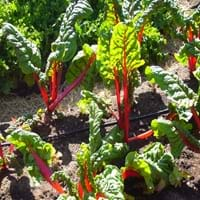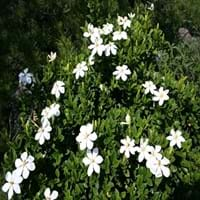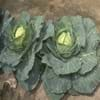Life Span
Biennial or Perennial
Perennial
Type
Vegetable
Broadleaf Evergreen
Origin
Europe
Eastern Asia
Types
Leaf beet, Seakettle beet, Spinach beet
Gardenia anapetes, Gardenia candida
Habitat
Cultivated Beds
Dry Forest, Subtropical climates
USDA Hardiness Zone
4-8
7-10
AHS Heat Zone
12-1
Not Available
Sunset Zone
A1, A2, A3, H1, H2, 1a, 1b, 2a, 2b, 3a, 3b, 4, 5, 6, 7, 8, 9, 10, 11, 12, 13, 14, 15, 16, 17, 18, 19, 20, 21, 22, 23, 24
21,22
Habit
Clump-Forming
Prostrate/Trailing
Flower Color
Red, Green
White, Ivory
Flower Color Modifier
Bicolor
Bicolor
Fruit Color
Tan
Not Available
Leaf Color in Spring
Dark Green, Green, Orange, Red, White, Yellow
Dark Green
Leaf Color in Summer
White, Yellow, Red, Green, Orange, Dark Green
Dark Green
Leaf Color in Fall
White, Yellow, Red, Green, Orange, Dark Green
Dark Green
Leaf Color in Winter
Not Available
Dark Green
Leaf Shape
Heart-shaped
Elliptic
Plant Season
Spring, Summer, Fall, Winter
Spring, Summer, Fall, Winter
Sunlight
Full Sun
Full Sun, Partial Sun
Type of Soil
Loam, Sand
Clay, Loam, Sand
The pH of Soil
Neutral, Alkaline
Acidic, Neutral
Soil Drainage
Well drained
Well drained
Bloom Time
Late Spring, Early Summer, Summer
Late Spring, Early Summer, Summer, Late Summer, Early Fall, Fall
Tolerances
Drought
Shade areas
Where to Plant?
Ground
Container, Ground, Pot
How to Plant?
Seedlings
Seedlings, Stem Planting
Plant Maintenance
Medium
Low
Watering Requirements
Average Water Needs
Do Not over Water, Keep ground moist, Never Over-water, Requires a lot of watering, Requires regular watering, Requires watering in the growing season
In Summer
Lots of watering
Ample Water
In Spring
Moderate
Moderate
In Winter
Average Water
Less Watering
Soil pH
Neutral, Alkaline
Acidic, Neutral
Soil Type
Loam, Sand
Clay, Loam, Sand
Soil Drainage Capacity
Well drained
Well drained
Sun Exposure
Full Sun
Full Sun, Partial Sun
Pruning
Remove damaged leaves, Remove dead branches, Remove dead leaves
Prune in summer, Remove damaged leaves, Remove dead leaves, Remove dead or diseased plant parts
Fertilizers
Apply 10-10-10 amount
All-Purpose Liquid Fertilizer, Magnesium, Nitrogen, Potassium
Pests and Diseases
Cercospora leaf spot, Damping off, Darkling beetles, Downy mildew
Mealybugs, Spider mites, Whiteflies
Plant Tolerance
Drought
Shade areas
Flowers
Insignificant
Showy
Flower Petal Number
Not Available
Double, Semi-Double
Foliage Texture
Coarse
Fine
Foliage Sheen
Glossy
Glossy
Attracts
Insects
Bugs, Insects, Leaf Hoppers
Allergy
dark circles, Diarrhea, Runny nose, Vomiting, wheezing
Asthma, breathing problems
Aesthetic Uses
Ground Cover
Beautification, Landscape Designing, Showy Purposes
Beauty Benefits
Moisturizing, Remove blemishes, Slow downs aging, Speed hair growth
Good for skin and hair
Environmental Uses
Air purification
Air purification, Food for insects, Prevent Soil Erosion, Shelter for wildlife, Very little waste
Medicinal Uses
Antitumor, Carminative, Haemostatic, Stomachic, Tonic
Abdominal Disease, Abscess, Acid Reflux
Part of Plant Used
Leaves, Root
Fruits, Leaves, Root
Other Uses
Cultivated for fodder, Eaten as a pot herb, Used to make juice
Air freshner, Economic Purpose, Employed in herbal medicine, Medicinal oil, Used for its medicinal properties
Used As Indoor Plant
No
Yes
Used As Outdoor Plant
Yes
Yes
Garden Design
Bedding Plant, Container, Edible, Herb / Vegetable, Mixed Border
Container, Feature Plant, Foundation, Groundcover, Mixed Border, Tropical
Botanical Name
BETA vulgaris ssp. cicla
GARDENIA jasminoides 'Radicans'
Common Name
Swiss Chard
Gardenia
In Hindi
Swiss Chard
बौना गार्डेनिया
In German
Swiss Chard
Dwarf Gardenia
In French
Chard suisse
Gardenia Dwarf
In Spanish
Acelgas
Gardenia enana
In Greek
Σέσκουλο
νάνος Gardenia
In Portuguese
Acelga suíça
Gardenia Dwarf
In Polish
Boćwina
Dwarf Gardenia
In Latin
Swiss Chard
Gardenia Dwarf
Phylum
Magnoliophyta
Tracheophyta
Class
Magnoliopsida
Magnoliopsida
Order
Caryophyllales
Rubiales
Family
Chenopodiaceae
Rubiaceae
Clade
Angiosperms, Core eudicots, Eudicots
Angiosperms, Asterids, Eudicots
Tribe
Cyclolobeae
Gardenieae
Subfamily
Betoideae
Cinchonoideae
Importance of Swiss Chard and Dwarf Gardenia
Want to have the most appropriate plant for your garden? You might want to know the importance of Swiss Chard and Dwarf Gardenia. Basically, these two plants vary in many aspects. Compare Swiss Chard and Dwarf Gardenia as they differ in many characteristics such as their life, care, benefits, facts, etc. Every gardener must at least have the slightest clue about the plants he wants to plant in his garden. Compare their benefits, which differ in many ways like facts and uses. The medicinal use of Swiss Chard is Antitumor, Carminative, Haemostatic, Stomachic and Tonic whereas of Dwarf Gardenia is Abdominal Disease, Abscess and Acid Reflux. Swiss Chard has beauty benefits as follows: Moisturizing, Remove blemishes, Slow downs aging and Speed hair growth while Dwarf Gardenia has beauty benefits as follows: Moisturizing, Remove blemishes, Slow downs aging and Speed hair growth.
Compare Facts of Swiss Chard vs Dwarf Gardenia
How to choose the best garden plant for your garden depending upon its facts? Here garden plant comparison will help you to solve this query. Compare the facts of Swiss Chard vs Dwarf Gardenia and know which one to choose. As garden plants have benefits and other uses, allergy is also a major drawback of plants for some people. Allergic reactions of Swiss Chard are dark circles, Diarrhea, Runny nose, Vomiting and wheezing whereas of Dwarf Gardenia have Asthma and breathing problems respectively. Having a fruit bearing plant in your garden can be a plus point of your garden. Swiss Chard has no showy fruits and Dwarf Gardenia has no showy fruits. Also Swiss Chard is not flowering and Dwarf Gardenia is not flowering . You can compare Swiss Chard and Dwarf Gardenia facts and facts of other plants too.





